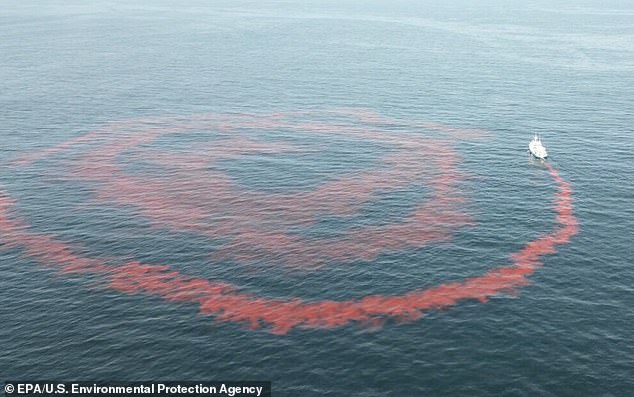As part of a new strategy to combat climate change, scientists are proposing to dump toxic sodium hydroxide into the ocean just 10 miles southwest of Martha’s Vineyard as early as September of this year, angering locals and environmental groups alike.
Researchers at the Massachusetts-based Woods Hole Oceanographic Institution (WHOI) are awaiting EPA approval to release a 6,600-gallon mixture of sodium hydroxide solution and freshwater into the Atlantic, in hopes that this will increase the ocean’s ability to absorb carbon dioxide emissions.
The ocean is crucial to offsetting greenhouse gases, experts say It absorbs 25 percent of all carbon dioxide on Earth..
The scientists behind this ‘LOC-NESS’ experiment (which stands for Locking Ocean Carbon in the Shelf and Northeast Slope) equate their hypothesis to giving the ocean a huge dose of Tums, thereby raising the pH and allowing seawater to absorb more planet-warming gases.
But angry residents and environmentalists are pushing back, arguing that sodium hydroxide, also known as lye, which is highly corrosive, is a harmful substance that could kill wildlife.
Pictured: A nontoxic dye release test conducted by the Woods Hole Oceanographic Institution south of Cape Cod in August 2023. This is what a potential sodium hydroxide spill into the ocean near Martha’s Vineyard might look like
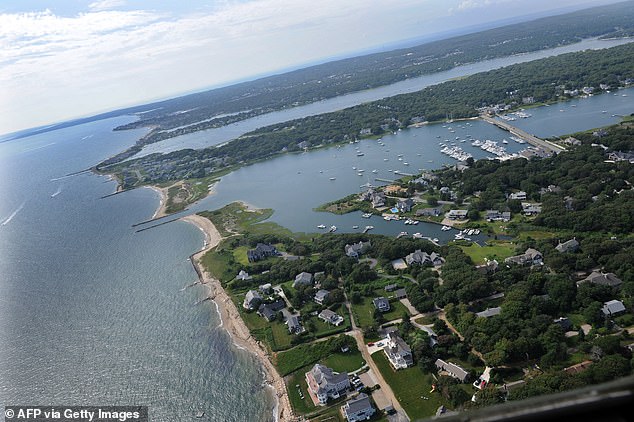
The coast of Martha’s Vineyard photographed from a helicopter in 2009
A man from Chappaquiddick, an island neighboring Martha’s Vineyard, shared his concerns about the upcoming plan.
“Does anyone else think this sounds like a really bad idea? Releasing 6,000 gallons of sodium hydroxide (lye) solution 10 miles southwest of Martha’s Vineyard?” Paul Bleicher posted in a local Facebook group, referencing a Boston Globe article covering the geoengineering plan.
“The paper makes it clear that they expect there to be an impact on the living marine environment. It will take days for the pH to return to a normal range,” he added.
There are others who think it’s a bad idea, chief among them Benjamin Day, the leading activist for Friends of the Earth based in Massachusetts.
“We strongly oppose the LOC-NESS geoengineering experiment,” Day said. “It is shocking that the EPA is even considering allowing caustic and dangerous chemicals to be dumped into ocean waters frequented by at least eight endangered species, including right whales and leatherback turtles.”
Day also told the The Boston Herald that sodium hydroxide is “an incredibly dangerous substance” that can cause chemical burns to both humans and marine animals.

Benjamin Day, affiliated with the environmental organization Friends of the Earth, is one of the main critics of the ‘LOC-NESS’ experiment
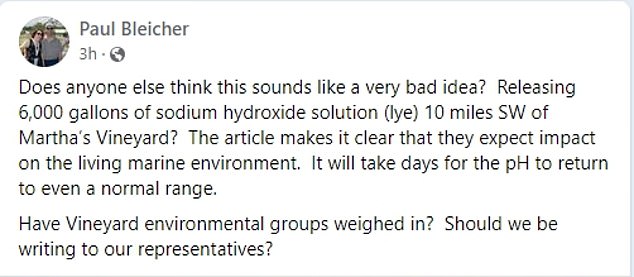
WHOI scientists are aware of the risks to marine life, but say the 56-acre area where the chemicals will be dumped will only be toxic for about a minute. The Boston Globe reported.
The solution will also be tinted with a red dye for easy tracking, making the eventual chemical spill appear similar to a nontoxic release test WHOI conducted south of Cape Cod in August 2023.
There will be a dedicated marine mammal observer on board the ship from which the sodium hydroxide will be dumped, and scientists say they will only proceed if there are no mammals in the area.
What they probably won’t be able to control, however, are the potential casualties among what other experts consider “critical” marine life, such as phytoplankton, zooplankton and fish larvae.
“I see it, essentially, as an attempt to address one form of marine pollution (carbon dioxide) with another,” James Kerry, an adjunct marine scientist at James Cook University in Australia, told the Globe.
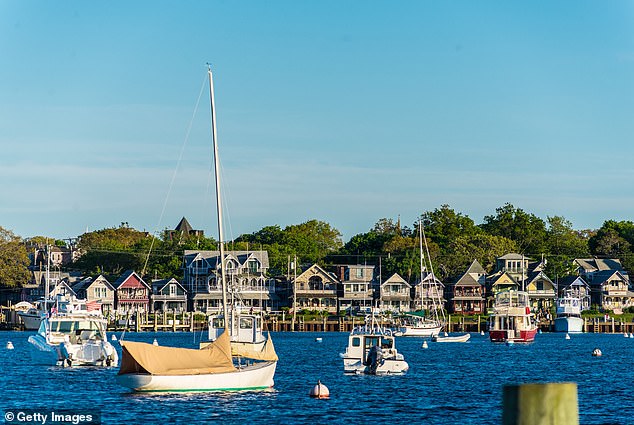
Several sailboats and motorboats moored in Oak Bluffs Harbor ahead of the season on Martha’s Vineyard
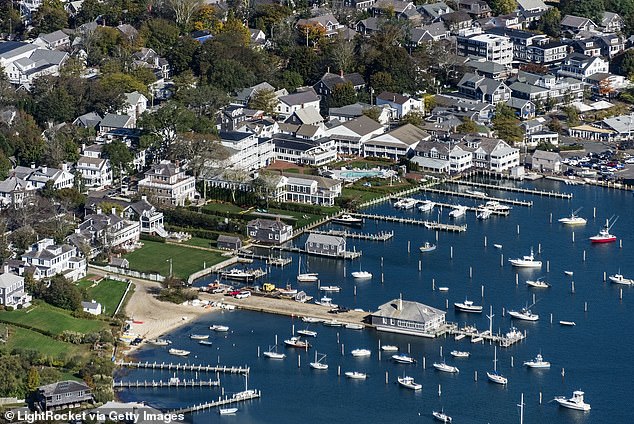
Aerial view of the harbor and town of Edgartown, an area encompassing eastern Martha’s Vineyard and all of Chappaquiddick
Several scientists, including Nicholas Hawco, a chemical oceanographer at Hawco University, argued otherwise, saying that phytoplankton might not be negatively affected in an experiment like this.
“Recently, some published laboratory experiments have indicated that alkaline additives have limited adverse effects on various types of phytoplankton,” Hawco wrote, expressing support for the “LOC-NESS” experiment. “However, given the diversity of phytoplankton types in the ocean… it is not possible to fully reproduce the natural environment in the laboratory.”
The EPA has already provisionally approved the LOC-NESS experiment, along with a larger 66,000-gallon sodium hydroxide landfill 50 miles east of Gloucester, Massachusetts.
If approved, that will happen next summer.
The luxury island, whose waters could be bombarded with sodium hydroxide within months, is a favourite holiday spot for celebrities including the Obamas and Clintons.
The EPA also opened a public comment period that ended just over a week ago, inviting all interested parties to share their views.

The Obamas are shown walking on the tarmac at Martha’s Vineyard Airport in West Tisbury, Massachusetts, in August 2016 for their summer vacation.

The Obamas live on a 28-acre estate in Edgartown, Massachusetts, on Martha’s Vineyard.
Many scientists who doubt that humanity can reverse its massive energy consumption and air pollution in a matter of decades have publicly supported WHOI’s tactic, believing it to be a smart plan to reduce emissions without requiring society-wide modification of human behavior.
“Globally, we will be producing billions of tonnes of excess carbon dioxide and it is dangerous. Neutralising it by increasing ocean alkalinity offers a (potentially) scalable method that mimics natural weathering,” wrote Professor Phil Renforth, a geochemist at Heriot-Watt University in Scotland.
Comments were also made by members of the public, presumably without scientific training.
One woman wrote: “This proposal reminds me of former President Trump’s comments that people should drink BLEACH to counteract the effects of COVID. The idea that caustic chemicals would be purposely placed in our oceans, anywhere, is beyond rational thought.”
Another wrote: “Dumping harmful chemicals into the ocean without any baseline data is unacceptable, especially at this scale and in an area so important to a variety of marine species.”
Now that the public comment period has ended, the EPA is expected to make its final decision on the chemical dump off the coast of Martha’s Vineyard sometime this summer.
(tags to translate)dailymail

